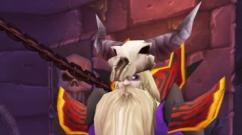Predatory animals. wolf family
Wolf family. A typical representative is a wolf. It lives throughout Russia - from the tundra to the southern steppes. They lead a wandering lifestyle, uniting in flocks. During the breeding season, they form pairs. The lair is arranged in remote places, under the roots of trees. The she-wolf brings 4-6 puppies. They feed on rodents, hares, birds, and ungulates. Puppies are fed by both parents. They hunt alone or in packs, chasing prey.


Common fox. The size, color and nature of the fur depends on geographical conditions. Distributed everywhere. Leads a nomadic lifestyle. Forms pairs during the breeding season. The fox digs a hole itself or occupies the minks of other animals. Once a year it brings 4-6, sometimes up to 10 blind cubs, which grow rapidly and can leave the hole in a month. Active around the clock, but especially in the evening and at dawn. It feeds on live prey: it pursues it, and digs up rodents. The fox destroys sick and dead animals.


Bear family. Three types of bears live in our country: white, brown and black. Bears are distinguished by their large body size, thick hair, and sharp, non-retractable claws on their paws. Bears are plantigrade mammals with short tails. Distributed in the northern hemisphere. They eat both animal and plant foods. The female gives birth to 1-2 cubs, very small, blind.

Polar bear. The largest of the bears is up to 3 meters long, weighing up to 1 ton. Does not hibernate. In the snowy lair, arranged under the rocks, lies only the female, who is preparing to become a mother. The number of the polar bear has been reduced, it is under protection.


Brown bear. The brown bear lives in Siberia, the Caucasus, in the mountains of Central Asia. Prefers forests rich in berries with swamps and ravines. In winter, it hibernates. The lair is arranged in remote areas of the forest, using natural shelters. In lean years, the bear does not sleep, this is called a connecting rod. He is very dangerous: he attacks domestic animals, ruins the hive. In December-February, the female gives birth to 1-3 cubs.





Characteristics of cats. Predators are large and medium, with long limbs armed with retractable claws. The coloration is spotted or striped. The carnivorous teeth are well developed. They feed on live prey, which they watch for and rush from an ambush. Distributed on all continents except Australia.

Tiger. The tiger is the largest of our cats. Up to 3 meters long, weighing 350 kg. Lives in the Far East and Central Asia. Leads a nomadic life, active at all times of the day. The lair suits in the bushes, less often among the rocks. It breeds every 2-3 years. There are 2-6 kittens in a litter. They become sexually mature at 4 years of age. They feed on ungulates: deer, roe deer, wild boars. After eating, he likes to rinse his mouth. The tiger is a rare animal, taken under protection.

1 of 26
Presentation - Predatory animals
The text of this presentation
Predatory animals
The presentation was made for a biology lesson by a student of grade 6 A

Who are the predators?
PREDATORY Beasts (Carnivora), a detachment of mammals. According to modern concepts, it includes the families of wolves, bears, raccoons, hyenas, mustelids, viverrids, mongooses, felines, as well as three families that were previously united in the order of pinnipeds: seals, eared seals and walruses; only about 270 species. They are distributed all over the world, in Russia only viverrids are absent. Body sizes of adult animals can be from 12 cm with a weight of 50 g (weasel) to 3 m and 700 kg (polar bear) and even 6.5 m and 3000 kg (elephant seal). Specific features of the body structure and lifestyle are very different in representatives of different systematic and ecological groups. Various species of carnivores can lead a terrestrial (most species), semi-arboreal (some viverrids, raccoons), semi-aquatic (otter) and aquatic (sea otter, seals) lifestyle. They inhabit a variety of landscapes - from arctic deserts to deserts and highlands. Most species feed mainly on animal food, but among terrestrial forms there are also omnivores and even predominantly herbivores (for example, the giant panda). Some species are distributed over very large areas, occur in various biotopes, and are characterized by a wide food spectrum. Others are characterized by a narrow biotopic or food specialization. Terrestrial carnivores are characterized by monogamy and the birth of underdeveloped and blind cubs.

WOLF (canine, canine; Canidae), a family of mammals of the order of predatory animals, includes 11 genera (about 35 species), including maned wolves, red wolves, arctic foxes, raccoon dogs, phoenixes (all in one species), wolves, foxes . Most of the species are included in the wolf subfamily. They always live in a pack of 6-8 animals. The main feature of the wolf character is “friendliness”. The length of an adult wolf from the tip of the nose to the tail is 2 meters. They weigh 43-45 kg. Smell 1.5 km away. Hardy Run 65-80 km per day at a speed of 55-60 km / h Eat up to 6 kg of meat in one sitting, hide the rest in reserve


Mustelidae, or marten (lat. Mustelidae) - a family of mammals of the order of carnivores. They are one of the most species-rich families. Mustelids appeared 40 million years ago, their size for predators is quite small. Mustelids include martens, minks, otters, badgers, ferrets, and so on. Mustelids are able to adapt well to various conditions, therefore they are represented in all parts of the world.


ROCCOON (Procyonidae), a family of mammals of the order of carnivores; includes 8 genera, 15–21 species. Most of the raccoons are medium-sized animals with an elongated flexible body (31–67 cm), a long (20–69 cm) tail, some of them prehensile. Weight from 0.8 to 22 kg. The muzzle of almost all is short, pointed, the ears are erect. Feet with long prehensile toes, plantigrade or digitigrade, sometimes with semi-retractable claws. Color varies from gray to bright reddish-brown. There are often marks on the muzzle, a ringed tail pattern is characteristic. Most species live in South and Central America, one species - in North America, two species - in Asia (pandas). Raccoons live mainly in tropical, mixed and mountain forests. Some species plunge into hibernation (raccoon-poloskun). Raccoons feed on amphibians, fish, rodents, as well as plant foods (fruits, berries) and insects. They breed once a year, usually from 2 to 6 cubs are born. Some species (raccoon-poloskun) are an object of fur trade.


Hyenas (Hyaenidae), a family of predatory mammals; includes four types. Hyenas are quite large animals: their body length is 55-165 cm, tail 20-33 cm, weight 10-80 kg. They have a short body. The head is massive, in most species with powerful jaws. The legs are strong, somewhat curved. The forelimbs are longer than the hind ones. Real hyenas have 4 fingers on both legs, the earthen wolf has 5. The claws are long, but blunt, convenient for digging. The coat is coarse, shaggy, on the ridge in the form of a long standing mane. The general color tone is dirty, yellowish-gray, or brown, with a striped or spotted pattern on the whole body or only on the legs. Hyenas are common in Africa, Western, Central and Southwestern Asia. One species is the striped hyena (body length about 1 m, tail about 30 cm) in Transcaucasia and Central Asia. The smallest species is the earthwolf (Proteles cristatus). The length of its body is up to 80 cm, the tail is up to 30 cm. It is common in East and South Africa. The earthwolf does not feed on carrion, unlike other species, but mainly on insects and their larvae (termites), less often on small mammals and birds. An important means of protection are the secretions of the anal glands, which scare away predators. The spotted hyena is the largest member of the hyena family. The number of hyenas is declining due to a decrease in wild ungulates, the corpses of which hyenas mainly feed on. The brown hyena (Hyaena brunnea) and the striped hyena are listed in the International Red Book.



Viverrids (Viverridae), a family of mammals of the carnivore order (Carnivora). Mostly small slender animals with short legs and long tails; many V. are similar in appearance to representatives of the weasel family. Some have special glands located near the anus and secrete an odorous secret - civet. 36 (or 37) genera, including about 75 species (the largest family of the carnivorous order). Distributed in South Asia, Africa (including Madagascar) and Southwestern Europe. They lead a terrestrial lifestyle, some live in trees. They feed on small animals, sometimes fruits and nuts. Main genera: genet (6 species), civet (3 species), binturong (one species), fossa (one species), ichneumons (8 species), mungo (one species), African civet (Civettictis, one species), African palm civet (Nandinia, one species), etc. Many V. are an object of hunting; civet is used in perfumery and medicine. Some V. are also kept in captivity to obtain civet.



Tiger (lat. Panthera tigris) is a species of predatory mammals of the cat family, which belongs to the subfamily of big cats. Reaches a length of 3.5 meters. Weighs 300 kg. A hungry tiger eats everything: deer, bulls, cows, buffaloes, lynxes, wolves, fish, locusts, snakes, frogs, mice. They live closer to the reservoir, swim well. Tigers hunt in the evening. They kill a horse with one blow of their paws.


What is developed?
Perfection of the brain A high level of nervous activity, characteristic of predatory animals, is ensured by a great perfection of the brain. It has well-developed hemispheres with three grooves, numerous convolutions, and large olfactory lobes. The number of respiratory movements in mammals depends on the size of the animal, which determines the different metabolic rates. It is (in 1 minute): in a horse - 8-16, in a black bear - 15-25, in a fox - 25-40, in a rat - 100-150, in a mouse - about 200. Ventilation of the lungs not only provides gas exchange, but it also has thermoregulatory significance. When the temperature rises, the number of breaths increases, and with it, the amount of heat removed from the body also increases. So, in a dog, the ratio of heat transfer during breathing to its total loss at an air temperature of 8 ° C is (in percent) 14, at 15 ° C - 22, at 30 ° - 46. All sense organs are well developed. All organs are well developed in predators. feelings. Especially the sense of smell: it is stronger than human in thousands of times. The sense of smell gives the predator more information about the world around him than his sharp eyesight.

Predator birds
Birds of prey are birds that hunt in flight. They have good eyesight, large claws and a beak adapted to capture or kill prey. Birds of prey do not constitute a single taxonomic group, but represent several taxa united by common features. Most diurnal birds of prey belong to the Falconiformes order: Accipitridae (Accipitridae) Skopidae (Pandionidae) Secretaries (Sagittariidae) Falcons (Falconidae) Nocturnal birds of prey include representatives of the order of owls (Strigiformes), which include two families: Owls (Strigidae) Barn owls (Tytonidae)

What is characteristic of birds of prey?
a certain set of digestive enzymes necessary for the efficient digestion of animal food, and the corresponding forms of behavior used when hunting various animals (birds, mammals, reptiles, etc.), large wingspan, strongly pointed claws, curved beak, sharp eyesight and good hearing .

Hawks (lat. Accipitridae) - a family of falcon-like birds. They are found on all continents except Antarctica and some oceanic islands, the most diverse and numerous in the tropics. There are cosmopolitan species whose range covers several parts of the world, island forms have a dotted range. They are found in a wide variety of types of landscapes: forests, tundras, steppes, deserts, in mountains up to an altitude of 7000 meters above sea level.
whistling kite

SCOPE (Pandion haliaetus) is the only species of the skopin family - it has a cosmopolitan distribution, occurring near water bodies. It lives in Europe and Asia (except for the tundra, south to Spain, the Mediterranean and South China), North Africa, Australia, North America, and on a number of islands in the Pacific Ocean. In the northern part of the nesting area, the osprey is migratory, wintering in South Africa, India, Indochina, and in the south of North America. The osprey arrives in our country in April, when water bodies are freed from the ice cover, and flies away for wintering in September. Osprey length 55-60 cm, weight 1.3-1.9 kg.
Osprey

The secretary bird, or secretary [(lat. Sagittarius serpentarius) is a bird from the falconiformes order, the only species of the family of secretaries. Her peculiar name comes from the black goose feather feathers on her head that court clerks used to wear in their wigs.
secretary bird

Falcons (lat. Falconidae) - a family of birds from the order Falconiformes (Falconiformes). Contains 12 genera and about 60 species. These include the smallest birds of prey - pygmy falcons, the size of which is in the range from 15 to 19 cm.
caracara

Owls (lat. Strigidae) - a family of birds of prey, belonging to the order of owls. Owls include, for example, long-eared owls, tawny owls, scops and eagle owls. In total, 23 genera and more than 200 species are classified as owls. Most owls hunt exclusively at night or at dusk. They differ from other birds of prey in the absence of a goiter, the presence of long blind intestines. For many peoples, owls are a symbol of wisdom. The owl has always been depicted along with the ancient Greek goddess of wisdom Pallas Athena and the Roman Minerva.
Owl

Barn owls (lat. Tytonidae) are one of two families of owls. The triangular facial disc, tapering downwards, distinguishes barn owls from true owls. The body is slender, the head is narrow and long. All barn owls are nocturnal hunters and feed mainly on small mammals such as mice, shrews, as well as small birds and large insects. To avoid sounds during flight, their feathers have a special fluff, and the feathers themselves have a special structure.
barn owl

Informational resources
http://ru.wikipedia.org http://www.megabook.ru/article.asp?aid=684593 http://images.yandex.ru/
THE END.
Code to embed presentation video player on your site:













































Enable effects
1 of 46
Disable effects
See similar
Embed code
In contact with
classmates
Telegram
Reviews
Add your review
slide 1
Biology lesson Grade 8 Predatory animals
slide 2
Animals that feed their young with milk are called mammals. What groups of mammals have you already studied? Rodents and lagomorphs
slide 3
Name the extra animal in each row. Why?
slide 4
List the characteristics of rabbits.
1.Born naked and blind 3.Dig deep holes 4.Do not dig holes 5.Feed on vegetation 6.Care for cubs 7.Do not care for cubs 1, 3, 5, 6 baby rabbits
slide 5
Find animal names
Mouse, rabbit, lynx, beaver, lion, gopher, tiger, wolf, hare, squirrel
slide 6
Underline with one line of rodents, 2 lines of lagomorphs, wavy predators.
Mouse, gopher, squirrel, beaver - Hare, rabbit - Lion, tiger, wolf, lynx rodents lagomorphs
Slide 7
Predatory animals
Slide 8
Goals:
Expand knowledge about predatory animals. Repeat knowledge about predators Consolidate knowledge
Slide 9
Habitats Food and methods of extraction The structure of the teeth The importance of animals for nature and man. A story about animals What do you know about the signs of predators, about the features of the structure? The value of these animals for humans Plan
Slide 10
What animals are called predatory animals?
Mammals that fully or partially feed on other mammals and birds are called predatory animals.
slide 11
What predatory animals are shown?
slide 12
Name the predatory animals.
bear wolf tiger lynx lion cheetah sable leopard
slide 13
habitats
In the forest In the mountains In the savannas In the jungle
Slide 14
Food
The fox eats: Wolves eat Lions, tigers, leopards attack hares, hedgehogs, mice, ducks wild boars, deer, domestic animals on large animals: zebras, antelopes, buffaloes
slide 15
Mining methods
Pursuit of prey Lie in wait and attack
slide 16
Compare the teeth of rodents and predatory animals
incisors fangs predatory teeth Rodents have no fangs predator rodents
Slide 17
Complete the offer
Digestive organs include... Respiratory organs provide... Circulatory organs include. and blood vessels Vision, hearing, smell
Slide 18
Meaning of animals
Are predatory animals necessary for nature? Orderlies Kill only sick animals and save the rest Destroy field pests (mice) Skins and fur are used by humans
Slide 19
Plan
Habitat Appearance Ways of getting food
Slide 20
slide 21
Wolves
They always live in a pack of 6-8 animals. The main feature of the wolf character is “friendliness”. The length of an adult wolf from the tip of the nose to the tail is 2 meters. They weigh 43-45 kg. Smell 1.5 km away. Hardy
slide 22
test yourself
What do wolves eat? When do wolves come out to hunt? What is the importance of wolves in nature and in human life?
slide 23
The Bears
brown grizzly bear
slide 24
Brown bear
Weighs from 90 to 350 kg. At a short distance, it can overtake a racehorse. They feed on: roots, berries, nuts, acorns, frogs, bird eggs, mice, fish, large wild animals, livestock, wild honey. Omnivorous
Slide 25
test yourself
Where do bears spend winter?
slide 26
Tigers
Slide 27
Tiger
Reaches a length of 3.5 meters. Weighs 300 kg. A hungry tiger eats everything: deer, bulls, cows, buffaloes, lynxes, wolves, fish, locusts, snakes, frogs, mice. They live closer to the reservoir, swim well. Tigers hunt in the evening. They kill a horse with one blow of their paws. The tiger is a solitary hunter. Marks his territory. They live for about 20 years.
Slide 28
Lynx
Slide 29
Lynx
The length of the lynx is not more than 1 meter, the weight is 18 kg. Tassels - a kind of antenna for the animal, Hunts in the early morning and at the end of the day in the marked area. Gets food by chasing hares, deer. They swim well and climb trees.
slide 30
test yourself
What does a lynx eat?
Slide 31
lions
slide 32
Lion on the hunt
Slide 33
a lion
Lion is the king of beasts. The lion is up to 3 meters long and weighs 180-220 kg. The lion has great physical strength. With one blow of his paw, he knocks down a zebra. Jumps great. It jumps up to 3 meters in height. It can jump over a gorge 11 meters wide. Lions live in groups - prides (lion leader, several lionesses with cubs.) Numbering from 4-5 members to 30-40 pieces. The females go hunting. They hunt zebras, antelopes, buffaloes. The pride does not protect the aged and sick lions, but is expelled. A decrepit lion, skinny and weak, often becomes the prey of hyenas.
slide 34
lions
Who hunts a lion or a lioness? How much does a lion eat at one time? The meaning of lions for a person?
Slide 35
cheetah
slide 36
Cheetah
Cheetah in translation means “dog-cat” Lives in Africa, India The skin is spotted, the muzzle is like that of a cat, with black tear stripes The cheetah does not roar like a tiger, but yelps like a dog Able to run at a speed of 120 km / h. Lone hunter. Hunting antelope. Always knocks down the victim with one jump and kills him by biting through the throat. Doesn't eat carrion. Never attacks a person Is on the verge of extinction
Slide 37
test yourself
How do cheetahs hunt? What do cheetahs eat? Why are cheetahs on the brink of extinction?
Slide 38
Leopard
Slide 39
Snow Leopard
Found in the mountains at an altitude of 3-4 km Beautiful and strong animal. Reminds me of a small tiger. The fur is not striped, but spotted with black spots on a silvery-white background .. The leopard is not a very large animal, its body length is 1.5 meters, and its weight is like that of a dog 30-39 kg. Short legs and long very fluffy tail. Hunting mountain goats. The leopard lies in wait for them on narrow mountain paths. Sometimes it follows one herd on its heels for months. Sometimes it manages with hares, catches a marmot or a bird. The man loves to hunt leopards. There were cases when hunters died falling from a height. Once a leopard killed a hunter by pushing a stone at him. Over the past 20 years, the number of snow leopards has declined markedly.
Slide 41
Guess the animal
It looks like a dark gray sheepdog, hunts in packs, usually at night. They kill domestic animals (sheep, goats, chickens, attacks dogs. A large strong beast It attacks large wild and domestic animals. It can kill a cow, deer, wild boar and loves berries, frogs, bird eggs. It lives in the forests of the south of the Far East and in the jungle Asia. Leads a solitary lifestyle. Very voracious. Can eat a small deer at a time. Drink a lot of water. Swim well. Wolf Brown bear tiger
Slide 42
The body is short, dense, muscular. The coat is gray with small spots. . lynx lion
slide 43
Homework
Prepare a story about any animal according to the plan. Read the material and answer the questions
Slide 44
Reflection
What animals were discussed in the lesson? What's new for myself
Slide 45
Internet resources
1. http://www.wallpage.ru/imgmig66/wallpapers_24544.jpg 2. http://images.yandex.ru/yandsearch?text 3.http://images.yandex.ru/yandsearch?text 4.http ://images.yandex.ru/yandsearch?text 5.http://images.yandex.ru/yandsearch?text 6.http://images.yandex.ru/yandsearch?text 7.http://images. yandex.ru/yandsearch?text 8. http://images.yandex.ru/yandsearch?text 9.http://images.yandex.ru/yandsearch?text 12.http://images.yandex.ru/yandsearch ?text=%20%D0%B3%D0%B5%D0%BF%D0%B0%D1%80%D0%B4%20%D0%BA%D0%B0%D1%80%D1%82%D0% B8%D0%BD%D0%BA%D0%B8&img_ 10.http://images.yandex.ru/yandsearch?text=%D1%80%D1%8B%D1%81%D1%8C%20%20% D0%BA%D0%B0%D1%80%D1%82%D0%B8%D0%BD%D0%BA%D0%B8&img_url= 11.http://images.yandex.ru/yandsearch?text
Slide 46
13.http://images.yandex.ru/yandsearch?text=% 14.http://images.yandex.ru/yandsearch?text 15.http://images.yandex.ru/yandsearch?text 16.http ://images.yandex.ru/yandsearch?text 17.http://images.yandex.ru/yandsearch?text 18.http://images.yandex.ru/yandsearch?text 19.http://images. yandex.ru/yandsearch?text=%20%D0%B3%D0%B5%D0%BF%D0%B0%D1%80%D0%B4%20%D0%BA%D0%B0%D1%80%D1 %82%D0%B8%D0%BD%D0%BA%D0%B8&img_url=www.wallon.ru%2F_ph%2F10%2F2%2F96231062.jpg&pos=29&rpt=simage 20.http://images.yandex.ru/ yandsearch?text 21.http://images.yandex.ru/yandsearch?text=%20%D1%81%D0%BD%D0%B5%D0%B6%D0%BD%D1%8B%D0%B9% 20%D0%B1%D0%B0%D1%80%D1%81%20%20%D0%BA%D0%B0%D1%80%D1%82%D0%B8%D0%BD%D0%BA% D0%B8&img_url=s017.radikal.ru%2Fi431%2F1111%2F26%2Fa7eef89e4e65.jpg&pos=33&rpt=simage
View all slides
Abstract
Subject: biology
Grade: Grade 8
Annotation.
Lesson type: combined.
Topic. Predatory animals.
Target:
Equipment: textbook, presentation
Lesson structure
Organizational moment.
Repetition of the past.
Introduction to the topic.
Statement of the topic, goals.
Learning new material.
Animal story
Consolidation.
Homework.
Summary of the lesson.
During the classes
1. Organizational moment.
2. Repetition of the past.
Teacher.
Mammals
Slide 2.
Teacher. What animals are called mammals?
-
Teacher
Rodents and hares.
Slide 3.
The task
Mouse, squirrel, beaver, Hare
Rabbit, hare, muskrat, white hare
1 row rodents,
2 row lagomorphs
Teacher
slide 4
The task:
1. Are born naked and blind
2. Are born sighted and with hair
3. Dig deep holes
4. Do not dig holes
5. Eat vegetation
6. Take care of the cubs
7. Not caring for cubs
Teacher name the similarities
Appearance
Teacher
4. Introduction to the topic.
slide 5
slide 6
underline
Slide 8
5. Statement of the topic, goals.
Teacher.
Slide 9
Plan
habitats
Food and methods of extraction
3. The structure of the teeth
6 Animal story
Slide 10
Teacher.
Slide 11.
Teacher.
Student. Bear, wolf, lynx.
slide 12
Teacher.
slide 13
Teacher Where do they meet?
Side 14
2. Food
Side 15
Teacher
Quest: Ways to Get Food
Side 16
3. The structure of the teeth
Textbook page 159 .
Teacher.
Rodents do not have fangs.
Teacher
Side 17
Side 18
5 Significance of Predators
Fizminutka
7. Compilation of stories.
Teacher.
Plan
1. Habitat
2. Appearance
Ways to get food
Significance for nature and man
Side 20
Student. Wolves
Run 65-80 km per day at a speed of 55-60 km/h
They eat up to 6 kg of meat in one sitting, the rest is hidden in reserve
Teacher: Why are wolves called the orderlies of the forest?
How do wolves hunt?
Side 22
Pupil Bear
In January-February, a female bear brings 2-4 cubs weighing 400 grams.
Teacher: How do bears get their food?
Where do bears spend winter?
Side 26
Student. Tiger
Teacher: How do tigers hunt?
What do tigers eat?
Side 28
Lynx student
Teacher: What does a lynx eat?
What is the significance of the lynx for humans?
Side 31
Apprentice Leo
Lion is the king of beasts.
Teacher: How do lions live (loners, prides)?
Who hunts a lion or a lioness?
The meaning of lions for a person?
Side 35
Apprentice Cheetah
Is on the brink of extinction
Side 38
Student Snow Leopard
Teacher:
Side 40
8. Fixing.
Side 41
Wolf
Brown bear
Tiger
Tassels on the ears. They eat foxes, hares . Lynx
5. They live in the savannas of Africa. The female is very different from the male. They live in small flocks. The female goes hunting. The male defends the territory. They hunt buffaloes, antelopes. Go to the watering hole one at a time . a lion
9. Generalization.
Teacher.
Eat other animals
Benefit nature
Are on the brink of extinction
10. The result of the lesson.
Side 43
11. Homework.
(Habitat.
Appearance.
Mining methods
Significance for nature and man
References
3. Internet resources
Full name of the educational institution: MBSKOU SKOSHI-VIII species, Perm Territory, Lysva
Subject: biology
Grade: Grade 8
Annotation. Lesson "Predatory animals" -5 from the section "Mammals". The lesson takes place in the form of a game - an excursion. The students prepare their own story about the animal.
Lesson type: combined.
Topic. Predatory animals.
Target:
form ideas about the features of predators
promote the development of thought processes, coherent oral speech;
to promote the education of interest in the study of the animal world.
Equipment: textbook, presentation
Lesson structure
Organizational moment.
Repetition of the past.
Introduction to the topic.
Statement of the topic, goals.
Learning new material.
Animal story
Consolidation.
Homework.
Summary of the lesson.
During the classes
1. Organizational moment.
Today in the lesson you need to work actively for everyone and earn points that you and I set for each other. At the end of the lesson, we will calculate the number of points
2. Repetition of the past.
1. Establishing compliance.
Teacher. What section of animals are we going through
Mammals
Slide 2.
Teacher. What animals are called mammals?
- Animals that feed their young with milk are called mammals.
Teacher What groups of mammals have we studied?
Rodents and hares.
3. Checking homework
Slide 3.
The task Name who is superfluous in each row of animals. How to change pictures
Mouse, squirrel, beaver, Hare
Rabbit, hare, muskrat, white hare
1 row rodents,
2 row lagomorphs
Teacher We studied hares and rabbits in the last lesson
Recall What are the similarities and differences between hares and rabbits?
slide 4
The task: Note the traits characteristic of rabbits
1. Are born naked and blind
2. Are born sighted and with hair
3. Dig deep holes
4. Do not dig holes
5. Eat vegetation
6. Take care of the cubs
7. Not caring for cubs
Teacher name the similarities
Appearance
Teacher Guys, what do you think, and some other animals belong to Mammals?
4. Introduction to the topic.
slide 5
Task in pairs. Find animal names
slide 6
Mouse, lion, hare, lynx, beaver, gopher, rabbit, squirrel, wolf, tiger
underline one couple of rodents, two - lagomorphs, the rest - a wavy line. These animals are carnivores.
Slide 8
5. Statement of the topic, goals.
Teacher. What animals are called predators? Do you know about the signs of predators, about the significance of these animals in human life? Today in the lesson you will find the answers to these questions. The work will be based on the plan:
Slide 9
Plan
habitats
Food and methods of extraction
3. The structure of the teeth
5 Significance for nature and man
6 Animal story
6. Learning new material.
Slide 10
1. General information about predators.
Teacher. What animals are called carnivores.
Animals that fully or partially feed on other mammals and birds are called carnivores.
Slide 11.
Teacher. Watch a movie clip and name the predatory animals?
Student. Bear, wolf, lynx.
slide 12
Teacher. What predatory animals do you know?
Bear, wolf, lynx, cheetah, tiger, lion, sable, mink, fox,
slide 13
Teacher Where do they meet?
In the forest, in the savannas, in the mountains, in the steppes, near water bodies
The task is to correlate pictures of animals with a habitat?
Side 14
2. Food
Side 15
Teacher How some animals get their own food page 160 (aloud)
Quest: Ways to Get Food
Work is done individually
Side 16
3. The structure of the teeth
Textbook page 159 . Consider the structure of teeth in predators
- Incisors, fangs and predatory teeth.
Teacher. Compared to the structure of teeth in rodents, how do they differ?
Rodents do not have fangs.
Teacher For a good hunt, what else do predators need?
Good vision, hearing, smell
Side 17
The task. Add an offer.
The digestive organs include ... (stomach, liver, short intestine)
Respiratory organs provide ... (lungs provide oxygen to the body)
The circulatory organs include ... (4-chamber heart and blood vessels)
Predators are well developed ... (vision, hearing, smell)
Side 18
5 Significance of Predators
Are predatory animals necessary for nature?
Predators are nurses. Only sick animals are killed and the rest are kept. Destroy field pests (mice). Skins and fur are used by man. Due to the fact that many animals have good fur, they were mercilessly killed.
Fizminutka
7. Compilation of stories.
Teacher. Today in the lesson, I invite you to play the role of zoo workers, namely, the section of predators. Your task is to compose a story about any predator for zoo visitors. Try to make the stories interesting and connected. The materials of the textbook and the plan will help you with this.
Students choose any animal, prepare oral stories according to the plan, using the textbook.
Plan
1. Habitat
2. Appearance
Ways to get food
Significance for nature and man
Then the game "At the zoo" is played. Students act as tour guides and tell stories. The best tour guides are selected.
Side 20
Student. Wolves
They always live in a flock of 6-8 animals. The main feature of the wolf character is "friendliness". The length of an adult wolf from the tip of the nose to the tail is 2 meters. They weigh 43-45 kg. Smell 1.5 km away. Hardy
Run 65-80 km per day at a speed of 55-60 km/h
They eat up to 6 kg of meat in one sitting, the rest is hidden in reserve
Teacher: Why are wolves called the orderlies of the forest?
How do wolves hunt?
Side 22
Pupil Bear
Weighs from 90 to 350 kg. At short distances it can outrun a racehorse.
In January-February, a female bear brings 2-4 cubs weighing 400 grams.
They feed on: roots, berries, nuts, acorns, frogs, bird eggs, mice, fish, large wild animals, livestock, wild honey. Omnivorous
Teacher: How do bears get their food?
Where do bears spend winter?
Side 26
Student. Tiger
Reaches a length of 3.5 meters. Weighs 300 kg. The tiger is a solitary hunter. Marks his territory. Tigers hunt in the evening. A hungry tiger eats everything: deer, bulls, cows, buffaloes, fish. One blow paws kill a horse. They drink a lot of water, live closer to the reservoir, swim well. They live for about 20 years. Rare animals. Listed in the Red Book.
Teacher: How do tigers hunt?
What do tigers eat?
Side 28
Lynx student
The lynx lives in the forest. The length of the lynx is not more than 1 meter, weight - 18 kg. Hunts in the early morning and at the end of the day in the marked area for hares. Can attack a deer. They swim well and climb trees. The lynx has valuable fur.
Teacher: What does a lynx eat?
What is the significance of the lynx for humans?
Side 31
Apprentice Leo
Lion is the king of beasts.
The lion is up to 3 meters long and weighs 180 kg. The lion has great physical strength. With one blow of his paw, he knocks down a zebra.
Jumps great. It jumps up to 3 meters in height. It can jump over a gorge of 11 m. Females come out to hunt. They hunt zebras, antelopes, buffaloes. The pride does not protect the aged and sick lions, but is expelled.
Lions live in groups - prides (leader lion, several lionesses with cubs.) Numbering from 4-5 members to 30-40 pieces.
A decrepit lion, skinny and weak, often becomes the prey of hyenas. Lions are rare animals, preserved in national parks, zoos
Teacher: How do lions live (loners, prides)?
Who hunts a lion or a lioness?
The meaning of lions for a person?
Side 35
Apprentice Cheetah
Cheetah means "dog-cat" in translation. Lives in Africa, India
The skin is spotted, the muzzle is like that of a cat, with black tear stripes. The cheetah does not roar like a tiger, but yelps like a dog. Able to run at a speed of 120 km / h.
Lone hunter. Hunting antelope. Always knocks down the victim with one jump and kills him by biting through the throat. Doesn't eat carrion. Never attacks a person
Is on the brink of extinction
Side 38
Student Snow Leopard
Found in the mountains at an altitude of 3-4 km. Beautiful and strong animal. The fur is spotted, black spots on a silvery white background. The leopard is not a very large animal, its body length is 1.5 meters, and its weight is 30-39 kg like a dog's. Short legs and long very fluffy tail. Hunting mountain goats. The leopard lies in wait for them on narrow mountain paths. Sometimes it follows the same herd on its heels for months. Sometimes it manages with hares, catches a marmot or a bird. The man loves to hunt leopards. There were cases when hunters died falling from a height. Once a leopard killed a hunter by pushing a stone at him. Over the past 20 years, the number of snow leopards has declined markedly.
Teacher: What animals did you meet on the tour?
Which tour did you like? Who is the best tour guide?
Side 40
8. Fixing.
Who was the best tour guide?
Whose story did you like best?
What are the common features of predators (they eat other animals, predators have fangs, benefit nature).
Side 41
Assignment on individual cards.
Guess from the description what kind of animal it is?
1. They look like dark gray shepherd dogs, they hunt in packs, usually at night. They kill domestic animals (sheep, goats, chickens), attacks dogs. Wolf
2. Large strong beast It attacks large wild and domestic animals. Can kill cow, deer, wild boar. But he loves berries, frogs, bird eggs.
Brown bear
3. Lives in the forests of the south of the Far East and in the jungles of Asia. Leads a solitary life. Very voracious. Can eat a small deer at a time. I drink a lot of water. They stay near water. They swim well. Tiger
4. The body is short, dense, muscular. The coat is gray with small spots.
Tassels on the ears. They eat foxes, hares . Lynx
5. They live in the savannas of Africa. The female is very different from the male. They live in small flocks. The female goes hunting. The male defends the territory. They hunt buffaloes, antelopes. Go to the watering hole one at a time . a lion
9. Generalization.
Teacher. What are the common characteristics that all predators have?
Eat other animals
They get food by chasing and lie in wait for their prey.
Benefit nature
Are on the brink of extinction
Well developed vision, hearing and smell
10. The result of the lesson.
Teacher. What animals were discussed in the lesson? What do these animals have in common? What new, interesting things did you learn about rodents? What else would you like to know?
Side 43
11. Homework.
(Habitat.
Appearance.
Mining methods
Significance for nature and man
References
1. A.I. Nikishev A.V. Teremok. Textbook for grade 8 SKOU VIII type. Biology. Animals. M: "Enlightenment", 2004
To use the preview of presentations, create a Google account (account) and sign in: https://accounts.google.com
Slides captions:
Animals. Predators. The work was done by a student of the 7th grade of the MOU "Secondary School No. 94" Ivasko Anastasia. Biology teacher: L.I. Karnaushchenkova
Carnivores - a detachment of placental mammals11 modern families of carnivores contain about 270 species in 110 genera and are distributed almost all over the world. The vast majority of the members of the order are classic carnivores, preying mainly on vertebrates. Carnivores are sometimes also divided into two groups that differ greatly from each other in their way of life: land predators and pinnipeds.
Many carnivores eat more than just meat. Bears are opportunistic omnivores, and some species, such as the giant panda, even specialize in plant-based nutrition.
Red pandas, badgers, olingos, kinkajou, raccoons, and raccoon dogs also make up a significant, if not the main, part of their diet. Hyenas and canines (wolves, coyotes, jackals, foxes) eat watermelons and melons on melons and fruits that have fallen to the ground
The order of predatory animals is very diverse. Animals vary in size, habitat, modes of movement and other characteristics. Most of the predatory representatives lead a terrestrial lifestyle, but there are also individual representatives, such as minks and otters, living in fresh water, and a sea otter, which is a marine animal.
The animals of this detachment are different in size. The order includes both a miniature weasel and a polar bear. Body length varies from 14 cm to 3 m, and weight from 100 g to 1 ton. Predatory animals are armed with very sharp claws that help them in hunting. Most carnivores have a long tail, except for bears, in which it is hidden under fur. The hairline is well developed. It is different, depending on the type of animal, in density, splendor and color.
For most predators, it is common to eat the meat of animals killed by them, while they do not disdain the remnants of other people's food, carrion, insects and vegetation. Due to the difficulties of regularly obtaining meat, predators have to stock up, but sometimes there comes a time when they have to starve.
Most representatives of the predatory order prefer a solitary or lonely family lifestyle. Animals mark their territory with urine or excrement. The size of the territory depends on the size of the predator, the amount of food needed and the availability of food. Some animals live in packs. The pack consists of united families of parents and their cubs, such a way of life includes wolves and lions. Predatory animals hunt mainly at dusk, at night or at dawn, in places remote from people.
The habitat of the predatory order is very wide. Its representatives can be found all over the globe, except for Antarctica and small oceanic islands. The families of wolf, bear and marten are especially widespread.
The most favorable habitat for all predators are forests, to a lesser extent choosing open areas and mountains. Some species prefer water bodies, they can swim and dive. Many forest predators are able to climb trees. For shelter and breeding of offspring, predatory animals use their own dug or someone else's holes, caves, hollows, rock crevices, etc. Often, one predator has two or even three such shelters.
Most representatives of the predatory order have practical applications for us. Such animals as sable, otter, mink, arctic fox, leopard, fox, etc., we attributed to animals with very beautiful and lush fur, which is valued to this day. Especially valuable are the skins of animals that lived in the northern latitudes and high mountain regions. Due to the high demand for their skins on the market, people began to breed or acclimatize them in places that are not natural habitat or where they were once exterminated.
Sometimes predatory animals can be epidemically harmful. For example, a wolf, a jackal, a raccoon dog, along with domestic dogs, in some cases are the hosts of the rabies virus and become very dangerous for humans.
On the topic: methodological developments, presentations and notes
Lesson-generalization on the topic "Thermal phenomena" in the 8th grade. The lesson contains oral work in the form of a physical warm-up, a theoretical test on a given topic, a physical lotto to test knowledge of formulas on a given topic...
Presentation for algebra lessons in grade 11 on the topics "Increase and decrease of a function. Extrema of a function."
The presentation is made up of three lessons. I took some of the material from the presentations of other teachers, for which I thank them very much. It is convenient to compose the already made material at your own discretion for this class ...
The general deterioration of health is currently one of the most important problems of mankind. At the same time, everyone wants to be healthy. First of all, good health is necessary for a person in order to ...
slide 1
Animals. Predators. The work was done by a student of the 7th grade of the MOU "Secondary School No. 94" Ivasko Anastasia. Biology teacher: L.I. Karnaushchenkovaslide 2
 Carnivores - a detachment of placental mammals11 modern families of carnivores contain about 270 species in 110 genera and are distributed almost all over the world. The vast majority of the members of the order are classic carnivores, preying mainly on vertebrates. Carnivores are sometimes also divided into two groups that differ greatly from each other in their way of life: land predators and pinnipeds.
Carnivores - a detachment of placental mammals11 modern families of carnivores contain about 270 species in 110 genera and are distributed almost all over the world. The vast majority of the members of the order are classic carnivores, preying mainly on vertebrates. Carnivores are sometimes also divided into two groups that differ greatly from each other in their way of life: land predators and pinnipeds.
slide 3
 Many carnivores eat more than just meat. Bears are opportunistic omnivores, and some species, such as the giant panda, even specialize in plant-based nutrition.
Many carnivores eat more than just meat. Bears are opportunistic omnivores, and some species, such as the giant panda, even specialize in plant-based nutrition.
slide 4
 Red pandas, badgers, olingos, kinkajou, raccoons, and raccoon dogs also make up a significant, if not the main, part of their diet. Hyenas and canines (wolves, coyotes, jackals, foxes) eat watermelons and melons on melons and fruits that have fallen to the ground
Red pandas, badgers, olingos, kinkajou, raccoons, and raccoon dogs also make up a significant, if not the main, part of their diet. Hyenas and canines (wolves, coyotes, jackals, foxes) eat watermelons and melons on melons and fruits that have fallen to the ground
slide 5
 The order of predatory animals is very diverse. Animals vary in size, habitat, modes of movement and other characteristics. Most of the predatory representatives lead a terrestrial lifestyle, but there are also individual representatives, such as minks and otters, living in fresh water, and a sea otter, which is a marine animal.
The order of predatory animals is very diverse. Animals vary in size, habitat, modes of movement and other characteristics. Most of the predatory representatives lead a terrestrial lifestyle, but there are also individual representatives, such as minks and otters, living in fresh water, and a sea otter, which is a marine animal.
slide 6
 The animals of this detachment are different in size. The order includes both a miniature weasel and a polar bear. Body length varies from 14 cm to 3 m, and weight from 100 g to 1 ton. Predatory animals are armed with very sharp claws that help them in hunting. Most carnivores have a long tail, except for bears, in which it is hidden under fur. The hairline is well developed. It is different, depending on the type of animal, in density, splendor and color.
The animals of this detachment are different in size. The order includes both a miniature weasel and a polar bear. Body length varies from 14 cm to 3 m, and weight from 100 g to 1 ton. Predatory animals are armed with very sharp claws that help them in hunting. Most carnivores have a long tail, except for bears, in which it is hidden under fur. The hairline is well developed. It is different, depending on the type of animal, in density, splendor and color.
Slide 7
 For most predators, it is common to eat the meat of animals killed by them, while they do not disdain the remnants of other people's food, carrion, insects and vegetation. Due to the difficulties of regularly obtaining meat, predators have to stock up, but sometimes there comes a time when they have to starve.
For most predators, it is common to eat the meat of animals killed by them, while they do not disdain the remnants of other people's food, carrion, insects and vegetation. Due to the difficulties of regularly obtaining meat, predators have to stock up, but sometimes there comes a time when they have to starve.
Slide 8
 Most representatives of the predatory order prefer a solitary or lonely family lifestyle. Animals mark their territory with urine or excrement. The size of the territory depends on the size of the predator, the amount of food needed and the availability of food. Some animals live in packs. The pack consists of united families of parents and their cubs, such a way of life includes wolves and lions. Predatory animals hunt mainly at dusk, at night or at dawn, in places remote from people.
Most representatives of the predatory order prefer a solitary or lonely family lifestyle. Animals mark their territory with urine or excrement. The size of the territory depends on the size of the predator, the amount of food needed and the availability of food. Some animals live in packs. The pack consists of united families of parents and their cubs, such a way of life includes wolves and lions. Predatory animals hunt mainly at dusk, at night or at dawn, in places remote from people.
Slide 9
 The habitat of the predatory order is very wide. Its representatives can be found all over the globe, except for Antarctica and small oceanic islands. The families of wolf, bear and marten are especially widespread.
The habitat of the predatory order is very wide. Its representatives can be found all over the globe, except for Antarctica and small oceanic islands. The families of wolf, bear and marten are especially widespread.
slide 10
 The most favorable habitat for all predators are forests, to a lesser extent choosing open areas and mountains. Some species prefer water bodies, they can swim and dive. Many forest predators are able to climb trees. For shelter and breeding of offspring, predatory animals use their own dug or someone else's holes, caves, hollows, rock crevices, etc. Often, one predator has two or even three such shelters.
Sometimes predatory animals can be epidemically harmful. For example, a wolf, a jackal, a raccoon dog, along with domestic dogs, in some cases are the hosts of the rabies virus and become very dangerous for humans.
The most favorable habitat for all predators are forests, to a lesser extent choosing open areas and mountains. Some species prefer water bodies, they can swim and dive. Many forest predators are able to climb trees. For shelter and breeding of offspring, predatory animals use their own dug or someone else's holes, caves, hollows, rock crevices, etc. Often, one predator has two or even three such shelters.
Sometimes predatory animals can be epidemically harmful. For example, a wolf, a jackal, a raccoon dog, along with domestic dogs, in some cases are the hosts of the rabies virus and become very dangerous for humans.













